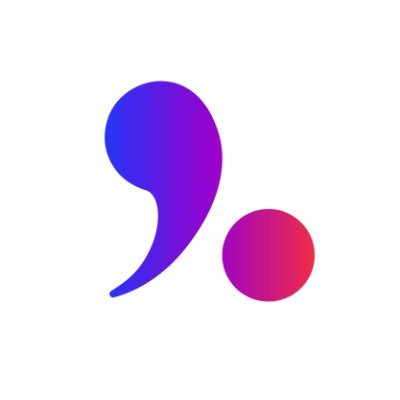According to some, the only method to learn a language is in person, with a native speaker as a teacher. While this is a fantastic method for learning a language, it is not for everyone.
It’s often pricey and demands a long-term commitment, let alone getting to lessons and fitting it into your schedule. It is just not a practical option for everyone.
There are several reasons to study a language as well; maybe you want to learn a few words before going on vacation or to extend your brain a bit.
Lingoda Vs Duolingo Ultimate Comparison In 2024
What is Lingoda?
Lingoda is a 24/7 online language school where native speakers teach you English, French, German, or Spanish (depending on what you sign up for).
The classes grow in complexity according to a set schedule, and the instructors assist you along the way in both individual and group sessions with up to four other students.
I had no idea what to anticipate from Lingoda. While I believe that learning a language in a small group setting works well for in-person lessons, I was doubtful that this format would work effectively for online learners.
When I joined up, I took advantage of a week-long trial that included access to three courses for $23.99; having chosen Spanish, I tried out three of the A1.1 sessions.
While I recognize that it just scratches the surface of what Lingoda has to offer, it was quite instructive in terms of its strengths and areas for improvement. Regrettably, this promotion has expired.
I loved the group lessons and was blown away by the professors and their near-exclusive use of Spanish. While some of the courses’ content may be improved, we covered a lot of ground.
Regrettably, the quality of your class might be altered by the other students in your class. It depends on your level of familiarity with the content and the number of students in the class.
While students at all levels will undoubtedly benefit from Lingoda’s immersive group courses, you may choose to enhance your studies with other materials.
What is Duolingo?
Duolingo is one of the most widely used language-learning applications available. It launched in 2012 and now provides education in 35 different languages. Additionally, it provides instruction in three created languages (perfect for brushing up on your Esperanto or High Valyrian).
Duolingo’s breadth of language offerings is a significant selling point. It’s really simple to have numerous languages running concurrently, and it’s an excellent method to initiate interaction with languages of interest. Because it is free, it is an excellent exploration resource.
As is the case with many materials that are accessible in a variety of languages, there is a cost. Certain languages have superior material, and Duolingo is far from an all-inclusive resource.
Rather than that, Duolingo shines at delivering a handy, gamified, and free method of language interaction. It excels at this for a large number of languages.
Duolingo’s activities are all bite-sized – you can spend as little as five minutes on it at a time if you like. However, it is improbable that you will “learn a language” at this pace.
How Does Lingoda Work?
Lingoda expressly disclaims being a language study app. It is a service that provides lessons taught by instructors.
If you are a novice, you may enroll in your chosen language’s first level. If you have previous familiarity with the language, you may use the website’s placement exam to choose where to begin.
The levels have been developed following the Common European Framework of Reference for Languages (CEFR). The amount of possible levels varies according to language.
For instance, Lingoda provides Spanish levels A1.1 through B2.3. You may study German up to C1.4. C2 is the highest level in this system.
Lingoda makes the assumption that you, the student, will devote some time to learning and studying the language independently of the resources provided by Lingoda.
When you attend a class, you should be prepared to put what you’ve learned into practice and to pick up some new skills along the road.
Each class includes a subject or theme and a PDF of the content that you may examine before the session. These instructional tools include conversation prompts, brief reading passages, and other exercises, many of which are meant to be performed aloud.
By reading the PDF, you may prepare for class, check up on unfamiliar words, and take notes. In our testing, we discovered that setting aside around 20 minutes a few hours before a class to examine the PDF was helpful.
The majority of students should still be able to engage fully in class if they do not schedule this learning time in advance.
When you establish a Lingoda account, you may check in to discover which courses are available on certain days or hours. The filtering tools are excellent and straightforward.
Lingoda validates the time of the lesson before booking it by displaying the current time in your time zone. In this manner, there are no concerns about the start time of class.
Each class includes a title and description, which include the class’s learning objective (e.g., speaking, grammar), the instructor’s name and a link to learn more about them, and the number of seats remaining in a group class.
When you examine an instructor’s bio, you may not always discover their linguistic origins. It might be beneficial to know whether you have a preference for teachers from a certain dialectical area, for example, Central America against Spain or Germany versus Switzerland.
If you begin attending lessons and discover that the level is insufficient, you may adjust it to a higher or lower level at your choice.
How Does Duolingo Work?
I’ve used Duolingo to learn or review numerous languages since it began. Some of them were new to me, while others I was already familiar with. I’ve been using it recently to brush up on my Spanish, which I’m also honing via an unrelated online study.
I did the same thing with Romanian a few years ago when I used it as a supplement to my studies.
When you initially begin and depending on the language, you may be required to take a placement exam if you have prior knowledge of the language. Bypassing the placement exam, you may be able to bypass some of the more basic classes, such as learning basic terms and verb conjugations.
Of course, you may always begin from the beginning. Additionally, you may learn as many languages as you choose concurrently and may change courses at any moment.
The structure is often taken for granted by students. When it is there, we are unaware of it. When it is absent, learning might seem to be unpleasant and pointless. What exercises am I to do next? Am I prepared to acquire new vocabulary? Is it necessary for me to revisit what I learned yesterday?
Duolingo is a very well-organized and structured program. The app’s home screen provides an ordered list of modules. Each module has a theme, which may be grammatical (Reflexives, Imperfect tense) or thematic (Arts, Sports).
Each module includes several lessons. You must complete a certain number of lessons before proceeding to the next set of modules. Each instruction takes me around three or four minutes on average.
Although you work chronologically, you may return to a lesson you’ve previously finished and re-do it at any moment. As you continue, previously taught words and ideas reappear.
The addition of new words is noted. After completing a substantial amount of introductory material, you may evaluate your knowledge by taking a practice exam. Keep an eye out for the dumbbell symbol.
Each module is divided into levels. For instance, you may finish level one of a module on the preterite to see it designated as complete and to have access to part of the subsequent material.
However, if that module has numerous levels, you may choose to fulfill them to continue training that talent. If you complete all levels in a module, the module’s icon changes to a gold coin.
If you stop practicing for an extended period, the coin breaks. You may fix it by returning to the module and resolving many stages.
Bear in mind that not all languages have the same amount of information. Some modules may have just one level.
Major Features and Benefits of Lingoda
1. Varied Instructors:
While it is technically possible to focus only on one instructor and their courses, I would recommend you venture out and experience the variety of accents and styles offered by Lingoda instructors!
This, in my view, is a true strength of the site. Each teacher I encountered was really helpful, competent, and enjoyable to work with.
2. Course Placement Examination:
A convenient and required element that I discovered while doing my Lingoda review is the placement exam. This enables them to determine your placement within their program. I tested into B1 German and thought that it accurately reflected my present language abilities.
3. Certificates:
Similar to Busuu (which you can read my review of here), you’re provided the opportunity to get a language certificate after you’ve completed the course and reached a specified CEFR level.
This may be advantageous if you want evidence of language proficiency for employment or if you find obtaining certifications to be an effective motivator.
4. Sprints in Language:
Lingoda has gained a measure of notoriety for its language sprint courses. Who or what are they? Lingoda will return 50% of your tuition if you commit to attending at least one class every two days for three months. That is enormous.
If you attend one class every day (and each!) for their ‘Super Sprint?’ Refund in full! Madness. I thought this was rather great on Lingoda’s part: many learners will drop out and have to pay (for superb training! ), and those who do will almost likely become advocates for Lingoda and the advantages of their system. Pretty astute.
If you’re the kind of person who can commit to doing something every day and arranging lessons weeks in advance, this might be a fantastic chance for you to learn at a significant cost. As in, free.
This may not be the greatest solution if your schedule changes often or if you have strict periods. Again, they provide a free 90 hours of language training from native speakers if you finish the whole program, so I’d recommend enrolling on the waitlist if you’re up for the task!
Major Features and Benefits of Duolingo
1. You can concurrently learn many languages:
Do you aspire to be a polyglot? In such a case, Duolingo may play a tiny but critical role in achieving your objective.
The program does not impose a limit on the number of languages you may study simultaneously. As a result, you may now effortlessly switch between Spanish and French anytime you want.
I’ve tried various apps, and most of them prevent you from learning another language until you’ve mastered the first. On the contrary, Duolingo enables you to study many languages concurrently.
There are no limitations. Assume you’ve spent time on Duolingo. In such a situation, you’ll notice a plethora of profiles with many languages and their associated levels.
However, I will not recommend exceeding 1 or 2. Language acquisition requires focused attention. Concentrating on too many can leave you befuddled and unable to focus on anything.
You may always pursue the second one after achieving at least an intermediate level of proficiency in the first target language.
2. Duolingo is completely free! :
It is completely free, and you get complete access to everything. That is why Khan Academy is the world’s most popular education learning platform.
Let’s face it – many individuals want to study a language but lack the financial means to do so. A parent may be unable to afford the tuition price for their daughter who wants to study Korean because she is fascinated by K-Pop, K-Drama, and K-Movie.
The objective of Duolingo to “make education free, enjoyable, and accessible to everyone” is undeniably true. You may not learn anything useful that will aid you in your work or in watching foreign films on Netflix, but it’s a start.
Bear in mind that every trip of a thousand miles starts with a single step.
3. Accessible Easily:
Whether you’re a stay-at-home mom, a student, or a professional on a tight schedule, Duolingo’s dynamic design makes it easy for anybody to use. You do not need to travel great distances or adhere to a rigid schedule to participate in regular lessons.
You may study at your speed whenever and wherever you wish. You may immediately return to the next lesson or review any previous ones for review.
All you need is a smartphone, internet connectivity, and an email account, which the majority of people nowadays have.
Features Verdict – Lingoda
As you can see, both of them have nice features. It is hard for users to select between the two. However, after deep analysis and reviewing various customers we can say that Lingoda has better features as compared to Duolingo.
Lingoda Pricing
There are four group class options available, each of which costs $ 56, $ 138, $ 200, or $ 760 per month and includes access to four, twelve, twenty, or eight lessons.
Private lessons cost $ 132, $ 312, $ 440, and $ 1520 a month, respectively, and include access to 4, 12, 20, and 80 classes.
Additionally, there are “marathon” plans available for 3, 6, or 12 that include cheaper per-class pricing and the opportunity to earn cashback if you attend 90 % of your sessions.
Duolingo Pricing
Everything we’ve discussed so far is entirely free. You will have to browse through some advertisements, but this is a minor price to pay for this amount of material.
Duolingo Plus is also available for people who wish to support the Duolingo mission while receiving a few extras.
It is not required but may appeal to Duolingo superfans. For the majority of users, the free version will suffice and is an excellent value.
Duolingo Plus is available on the following platforms:
- 12.99 dollars per month (paid monthly)
- $ 6.99 per month (12-month subscription)
Pricing Verdict – Duolingo
Since Duolingo is practically almost free, the clear winner here is Duolingo. To remove ads, you can make use of Duolingo paid plans as well which are not very high either. However, it still has fewer features as compared to Lingoda.
Quick Links
- Mondly vs Duolingo
- Duolingo vs Rosetta Stone
- Lingodeer vs Duolingo
- Rocket languages Vs Rosetta Stone
Final Verdict – Lingoda Vs Duolingo 2024
Most people just blindly choose Duolingo because it is almost free. However, learning a new language is not something you can take chances with.
You will have to give a lot of time and effort in your learning process and it has to be smooth or else you may just give up. Lingoda will make sure you don’t.












